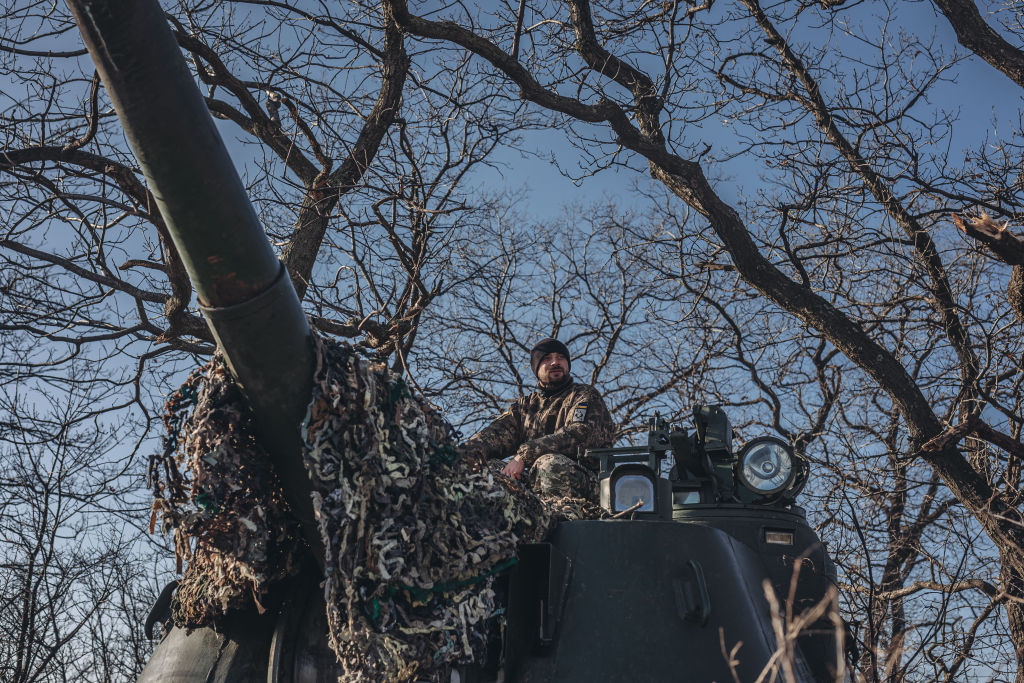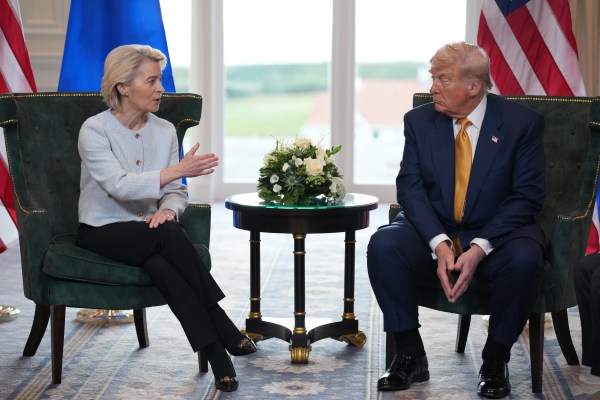As we’re approaching the one-year mark in Russia’s invasion of Ukraine, it’s clear that we’re witnessing something the world hasn’t seen in generations—a protracted all-out battlefield struggle between two large nations. The Vietnam War was certainly a major conflict and a protracted struggle, but it didn’t quite match what we’re watching play out in Eastern Ukraine.
The first Indo-Pakistan War of 1965 lasted a few weeks. The Six-Day War in 1967 lasted, well, six days. The second Indo-Pakistan War in 1971 lasted roughly two weeks. The Yom Kippur War was 19 days long. The major combat phase of Operation Desert Storm was less than two months, and the ground war lasted a mere 100 hours.
The long fights we’ve experienced are the insurgencies or the guerilla wars, where big armies don’t clash in the field, where advanced weapons aren’t deployed by both sides. Our long wars are low-intensity compared to the warfare we see in Eastern Ukraine.
The closest post–World War II comparison might be to Korea, where the U.S., South Korea, and their U.N. allies fielded huge armies in a brutal contest with North Korea and China that raged up and down the Korean peninsula for three long years. The Iran/Iraq war was also a brutal war of attrition, but it was fought by nations that lacked the military capacity of Russia or Ukraine. We’ve forgotten what that’s like. In fights between powerful nation-states we’ve become accustomed to quick victories or quick defeats, and we lack the frame for thinking through long slogs.
There’s a reason why I’m writing this piece today. Russia is threatening to seize a Ukrainian city, but without much more information we can’t truly understand the implications of Russian victory or defeat. Both sides can potentially lose by winning, if the cost of victory is too great. The real contest in Ukraine isn’t over real estate but over resources, and expending too many resources to take (or hold) too little ground is a net loss for either side.
Ukraine and Russia are locked in an all-out slugfest over the city of Bakhmut. For the Ukrainians, the city has become, as The New York Times described it, “a national symbol of defiance.” Russia—and the Wagner Group mercenary force that’s led much of the fight for the city—are as committed to taking the city as the Ukrainians are to defending it.
Both sides have taken horrific losses, but there are signs the Russians are making progress. Here’s NBC News:
Russian forces appear close to capturing a small but strategically important town on the front lines of the war in eastern Ukraine.
Russian soldiers and the Wagner group’s mercenary fighters were engaged in bitter fighting for the mining town of Soledar, officials in Kyiv and its Western allies said Tuesday, control of which could finally hand them a breakthrough in their bid to seize the key nearby city of Bakhmut.
I’m not predicting that Bakhmut will fall. I hope it will hold. But the plight of the city helps frame our thinking about what’s happened so far and what may happen in the months (or, God forbid, years) ahead.
One way to think about modern warfare between nation-states is through the prism of gathering and spending. When two advanced powers enter into protracted conflict, warfare can start to seem somewhat cyclical. One side gathers its strength, builds up its forces, and then—at the time and place of its choosing—pours out that strength and delivers its blow.
The other side gathers up its strength to receive the blow while preserving and/or obtaining the resources to deliver a counter-attack. Over time, the growing (or waning) ability to absorb and deliver blows can dictate the outcome of the war.
A paradigmatic example of this cycle took place on World War I’s Western Front. France and Germany traded offensives for year after year until the German capacity to strike bled away in its offensives of Spring 1918.
Operation Michael was the first and most potent of Germany’s spring attacks. At first, it looked like a German victory. It produced some of the largest gains since the onset of trench warfare in 1914, and it inflicted immense losses on allied forces. But the cost for Germany was too high. Tens of thousands of Germany’s best remaining troops were dead on the field of battle. It lacked the time and resources to fully reconstitute its forces. Meanwhile, American troops were pouring into France. Over the summer, the Allied material advantage became overwhelming, and they delivered a string of decisive blows in the fall.
A similar dynamic took place in World War II and, on a smaller scale, in Korea. Giant armies gathered their resources, delivered immense blows, took terrifying casualties, and then braced themselves for the coming counterattack. If they’d expended too much or moved too far, the offensive was a mere prelude to a defeat, as the opposing force took advantage of over-extended lines and/or thinned-out ranks.
Now let’s think through the cycles of the war in Ukraine. In the opening phase, Russia gathered its forces, then spent the lives of tens of thousands of soldiers and hundreds of advanced vehicles in the initial reckless attack on Kyiv.
Ukraine, in its turn, absorbed the blow and gathered (or maintained) sufficient force to expend a portion in its own counterattacks that ultimately drove Russian forces from the outskirts of Kyiv.
Russia then tried again. It gathered forces in the Donbas and again expended thousands of lives and hundreds of thousands of rounds of artillery ammunition to make incremental gains in the Donbas. At the time, it seemed as if the battlefield momentum had shifted back to Russia. But as the Times notes, it appears that the Russians had once again gathered too little and expended too much, leaving their lines vulnerable to the Ukrainian attacks that cleared Russians from Kharkiv and retook much of Kherson.
The upshot is that, while the territorial map obviously matters, it mainly matters when considered over a period of time rather than at any given moment (unless there’s a decisive breakthrough). What really matters is that awful calculus of resource and expense. That’s how Russia could take Bakhmut and still suffer a defeat if the cost is too high. That’s how Ukraine could hold Bakhmut and endure a net loss for the same reason. If the cost is too high, it alters the balance of power.
This is why Ukrainians, for example, are rightly alarmed by Russian mobilization. Even if Russian troops are untested and poorly trained, to quote Joseph Stalin, “Quantity has a quality all its own.” And now Vladimir Putin is poised to call up as many as 500,000 additional conscripts to add to the 300,000 called up this fall. Russia can’t rapidly replace its advanced weapons, but it can pour new men into the fight.
That’s why Volodymyr Zelensky would fly to the United States for his first trip outside Ukraine since the war started. In the gather/spend cycle, Russia can resource itself for a years-long struggle. Ukraine cannot. It simply doesn’t possess the manpower or industrial capacity to compete with Russia over the long term. Absent massive amounts of outside help, eventually Ukraine will run out of resources to gather, and it may well spend down its army to the point of collapse.
That’s the bad news. Here’s the good news. So long as American (and, to a lesser extent, British) support remains solid, Russia doesn’t possess the industrial or technological capacity to overcome Ukraine. And if America and its NATO allies start to supply Ukraine with Western armor, then Ukraine may be able to gather forces that Russia cannot withstand.
We can therefore consider three scenarios for a potential endgame in Ukraine.
- Russian resolve hardens and Western support fades. If American aid doesn’t keep pace with battlefield demand, then Ukraine will find itself constantly withdrawing from a diminishing bank account. Each cycle of attack and counterattack will leave Ukraine weaker, and there will be peace on Russian terms.
- Western support remains, but it merely matches Russian resolve. Under this scenario, the United States and its allies supply Ukraine with enough military aid to maintain the fight but not enough to win. Under this scenario, the West provides Ukraine with its defensive needs but not the offensive capacity that could allow it to punch through Russian lines and drive the invaders from Ukrainian territory.
- Western support and Ukrainian valor overcome Russian resolve. This is the decision to go for broke, to provide the kinds of weapons (main battle tanks, infantry fighting vehicles, ATACMS missiles) that would permit Ukraine to gain a decisive battlefield advantage. This is the scenario that enables Ukraine to strike deep into Russia to degrade Russian striking power and to achieve a material edge that can overcome Russia’s manpower advantage.
I’m concerned that Western caution might take the third scenario off the table. Fear of Russian escalation in the face of total battlefield defeat would mean that Western powers won’t give Ukraine the tools to win. Yet making a strategic choice to settle for a stalemate could not only yield even greater bloodshed, over time it could diminish support for the substantial aid that’s still necessary to merely stop Russia, much less throw it back to its borders.
In other words, choosing to settle for scenario 2 might both extend the war and make scenario 1 more likely. Asking populations to sacrifice for a stalemate hardly inspires as much as victory. The instant you make stalemate your goal is the instant that the Western will to support starts leaking away.
You’ll note that I didn’t list a fourth factor for an endgame in Ukraine—Russia losing resolve. That certainly a possibility, and if it continues to expend too much blood and treasure, the possibilities increase. But breaking Russian will is a hope. Breaking the Russian line is a plan.
I know all of this is simplistic. I know that there is room for battlefield brilliance to alter the grim arithmetic of total war. I know there is at least a theoretical risk of Russian escalation if it faces complete defeat. But we’ve seen this scenario before, and in a catastrophic contest between two great nations, the nation that can gather the most resources is quite often the nation that wins.
We have the capacity to help Ukraine gather superior resources, to force Russia to spend too much, and to help Ukraine force an end to this war. The question is whether we have the intention or the will. That’s exactly the question that the Biden administration and Congress have to answer this year and (perhaps) for years to come.







Please note that we at The Dispatch hold ourselves, our work, and our commenters to a higher standard than other places on the internet. We welcome comments that foster genuine debate or discussion—including comments critical of us or our work—but responses that include ad hominem attacks on fellow Dispatch members or are intended to stoke fear and anger may be moderated.
With your membership, you only have the ability to comment on The Morning Dispatch articles. Consider upgrading to join the conversation everywhere.